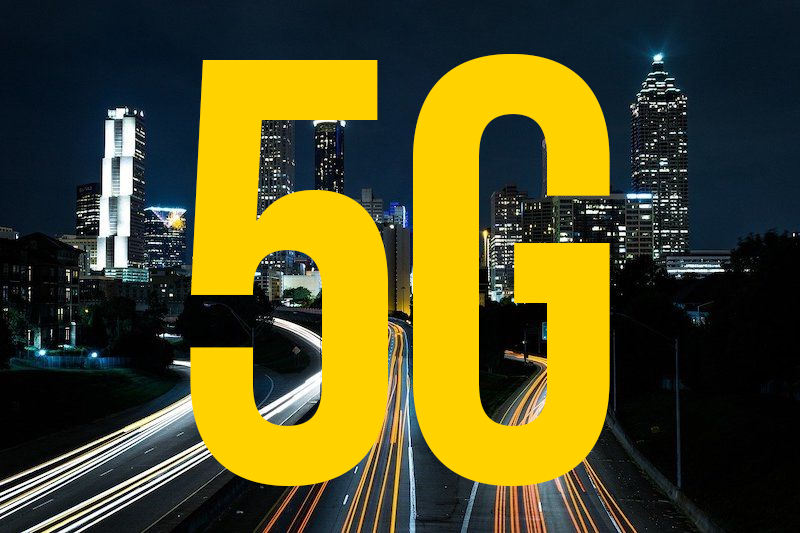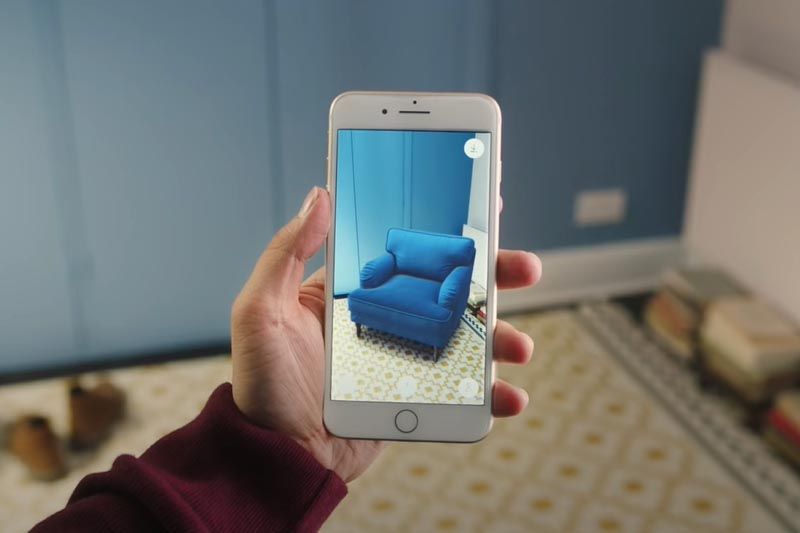
What does 5G's fast data, low latency, and expanded load capacity mean for the way we live, work, learn and play?
Soon, life will change with 5G. Vehicles will communicate with other vehicles, infrastructure, and networks – improving safety and traffic flow. Retailers will offer a more seamless and personalized in-store experience while making warehouse operations and inventory management more efficient. And in healthcare, connectivity-enabled innovations will make it possible to monitor patients remotely.
Thanks to the revolutionary potential of the fifth-generation cellular network, (which, once completed, should be at least 10 times faster than 4G LTE), instead of taking five minutes to download a movie on Netflix, it'll be ready to watch in just 30 seconds. Verizon thinks users will come to think of 5G as 'one of the fastest, most robust technologies the world has ever seen', but the new global wireless standard will not only enable faster downloads – it will bring about richer immersive experiences that will have a huge impact on how we work, live, learn and play. Its connectivity benefits will make businesses more efficient and give consumers access to more information – and quicker than ever before. Wireless VR experiences, smart cities, autonomous vehicles, industrial IoT – the potential of each will be unlocked by, and rely on, 5G.

Read now: Building a resilient, future-proof IT infrastructure [Blog]
With the COVID-19 pandemic disrupting work and accelerating demand for innovation, leaders are swiftly ramping up interest in 5G (and other advanced wireless technologies) because it offers:
- Extreme Mobile Broadband (xMBB)
- Ultra-Reliable Low-Latency Communication (uRLLC) and
- Massive Machine-Type Communication (mMTC)
South Korea, China, the United States and some countries in Europe have pushed forward with 5G adoption – and one estimate suggests that the 5G ecosystem could grow three to four times faster than other connectivity transformations. There's still a long way to go before 5G becomes the mobile data standard though – so let’s look at five ways how it could change the world.
1. 5G and healthcare
5G will lead to a new era of remote care – facilitating telehealth and telesurgery, giving doctors and clinicians the ability to provide care from afar. With 5G, simple home-based devices will monitor and automatically manage the health of people living with chronic conditions – such as diabetes and hypertension. If any health anomalies are detected, wearable devices will be able to alert those in the wider population – thereby facilitating a conversation with doctors based on the data they gather.
Further into the future: 3D X-rays will become commonplace, it will become possible to perform precision robotic surgery on people in rural areas from a remote hospital, and augmented reality (AR) and virtual reality (VR) applications will become more popular, enabling training of medical professionals. Furthermore, during emergencies, 5G-connected ambulances will interact with the local traffic network to set traffic lights and inform other motorists of their location, ensuring a clear path.
2. 5G and transportation
5G networks will be an enormous enabler for autonomous vehicles or self-driving cars. Due to the dramatically reduced latency, vehicles will be able to respond 10-100 times faster than with current cellular networks. Moreover, the 5G infrastructure will support the idea of connected cars that promises less congestion, safer travel, and a more connected user experience.
For example, traffic patterns could be altered based on real-time reports of road conditions and car manufacturers will be able to use vehicle data analytics to understand wear and failure mechanisms. Overall, the goal with 5G is a vehicle-to-everything (V2X) communication network – enabling vehicles to automatically respond to objects and changes around them almost instantaneously – like, sending and receiving messages in milliseconds in order to shift directions or brake in response to hazards, road signs, and people crossing the street.
3. 5G and industrial manufacturing
Have you seen videos of synchronized robotics at work in factory floors, manufacturing units, and supply chain applications? Right now, such applications tend to require cables because Wi-Fi does not provide the range, while the latency of today’s cellular technology is too high. But with the adoption of 5G in the manufacturing sector, industrial automation applications will cut the cord and go fully wireless – enabling more efficient smart factories and manufacturing facilities. Along with the mission-critical concept of factory automation, 5G will also enable abilities like real-time production inspection and assembly line maintenance.
4. 5G and smart cities
5G will improve all aspects of smart cities – including security, transportation, smart healthcare, environmental governance, and a lot more. It will enable cities to handle data from millions more IoT devices and install long-lasting low-power sensors that wouldn’t need replacing for years – thereby expanding their ability to intelligently manage power usage, air quality, traffic flow, public safety, etc.
For example, Vodafone has partnered with West Midlands 5G (WM5G) to develop a new smart parking system in Birmingham – which is the first in the UK to determine availability in real-time using 5G. The company has also confirmed that its high-speed, ultra-low latency 5G network will transform everyday life in rural Dorset – bringing in new opportunities to the residents and the millions of tourists who visit there every year – this will serve as a blueprint for 5G in rural Britain, according to the telecom giant.
5. 5G and retail
Most shoppers demand a personalized shopping experience. As retailers seek innovative ways to meet such customer expectations, 5G will help them continue to digitally transform, providing consumers with a far more personalized shopping experience. 5G-enabled AR and VR-based systems will enable shoppers to view how a piece of clothing would look on their bodies or a piece of furniture in their living room – all in 3D!
Using IoT-embedded sensors will help retailers have a real-time view of their stock – whether it’s a food item, a fashion accessory, or anything in between – resulting in faster response and restocking times whenever an item runs out of stock. With 5G, businesses can keep their shelves stocked with the items people want, avoid lost revenue – and keep their customers happy and satisfied.

IT Infrastructure requirements for 5G
5G network outages could have undesirable consequences. For example, any self-driving car reliant on the network for traffic or location data, could end up in congestion, in the wrong location, or worse – an accident. Factory downtime would impact revenue and eventually result in layoffs. And the loss of connectivity for monitoring health data could be catastrophic.
Therefore, resilience and high availability should be considered essential requirements for the success of 5G networks. Juniper Research predicts that the high-bandwidth capabilities of 5G will create data-intensive use cases leading to a 270% growth in data traffic generated by all cellular connections over the next five years. So failure to develop 5G network architectures that can handle increasing traffic will cause reduced network functionality – inevitably resulting in a diminished value proposition for 5G networks among users. So, rather than wait for 5G to go mainstream, organizations should already start to think of building a robust, future proofed IT infrastructure, that is 5G future-ready.
